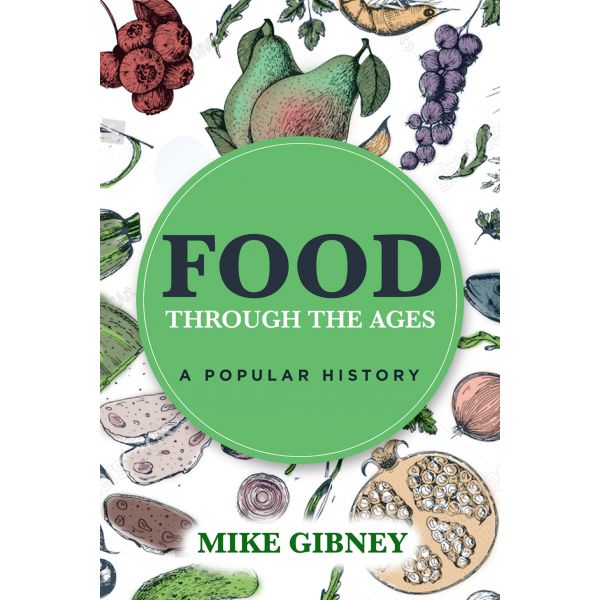Food through the Ages: A Popular History
Written for food aficionados everywhere, this book provides an entertaining look at the history and development of the key foods we eat every day
"... engaing history ... highly entertaining and informative." Liam Collins, Sunday Independent
Written for food aficionados everywhere, this book provides an entertaining look at the history and development of the key foods we eat every day. Mike Gibney, Professor Emeritus of Food and Health at UCD, traces the story of food from early hunter gatherers through settled agriculture to the migration across Europe, and examines the influence early trading, imperial conquests and medieval exploration had on the food chain. Along the way, Food through the Ages uncovers some fascinating nuggets:
? Indian rice is fluffy to eat with the hand, while Chinese rice is sticky to eat with chopsticks.
? In the Middle Ages it became fashionable to stuff boned smaller birds into bigger birds into even bigger birds and so on. This process, known as engastration, is still popular today in Cajun cuisine with Turducken, a hen in a duck in a turkey.
? A passion for tea led two great powers, China and England, to engage in warfare
? The popularity of the potato accounted for about 25% of the population growth in Europe from 1700 to 1900
? The Arabs brought pasta to Italy but the popular shaped pastas were most often produced in religious orders by nuns
? The Jesuits and Dominicans argued bitterly over the perceived magical yet sinful attributes of Aztec chocolate.
Professor Gibney explains the origins of commonplace foods, including bread, meat, fish, fruits, vegetables, pasta, rice, sugar, tea, chocolate and of course Ireland’s beloved potato. He defines a well-stocked larder and takes a look ahead at how technological and social changes could have a major impact on how and what we eat in the years ahead.
"... a fascinating tour indeed of food and eating it through the millennia." Johanna Dwyer, Nutrition Today
Some Extracts from Food through the Ages
Preface ...
The basic tenet of this book is that the more we know about the origins and history of the foods we eat, the more we can appreciate them beyond their role as functional ingredients in some dish or other. Also, there’s an aesthetic pleasure in understanding the role that spring and autumn monsoon winds played in sailing ships to and from Arabia to the coast of Malabar in southwest India in search of precious spices, in appreciating that the multitude of pasta shapes is not the legacy of whimsical engineers but rather the invention borne out of the necessity to best match pasta shapes to different sauces, or in recognising the ingenuity of early humans in mastering fire and its use in cookery. All of these help us to better understand and appreciate the foods we eat. And the reason I have a poem at the outset of each chapter is in a similar vein: to remind the reader that this is a book about the love of food.
Soup ...
Soyer’s book, A Shilling Cookery for the People, contained all sorts of recipes for those with little money. One such recipe was for sheep’s head soup. It was a dish that remained popular among the poor in Dublin and the dramatist Brendan Behan recalls this soup with horror in his essay, ‘The Confirmation Suit’ …
Chocolate ...
The Dominicans and the Jesuits were strongly represented among the missionaries of the New World and had opposing views on chocolate. The Jesuits, who had an undeclared interest in the matter, defended chocolate consumption arguing that it was medicinal and would prevent fainting at lengthy high masses.
The Dominicans were much more conservative and regarded chocolate as an aphrodisiac which would undermine moral standing, most particularly of women. This latter view was very strongly held among the Dominicans and harks back to the disputes between the Catholic clergy and the proponents of chocolate as a wholesome beverage. Chocolate had become strongly associated with sex in the early period of the Creole adoption of chocolate.
Potatoes ...
Of all the European countries, Ireland embraced the potato more than any other. In a comparison of potato agriculture across 37 countries, Ireland had the sixth highest production of potatoes, but this was achieved on a very limited acreage with Ireland ranking fourth lowest in per cent of suitable land used for potato production.
Fish ...
The ancient Celts believed that every time a salmon leaped from the water, it gained in knowledge and one of the greatest of ancient Celtic sagas surrounds the warrior and adventurer Finn McCool (Fionn mac Cumhaill) who helped the druid Finnegas to hunt for the mythical salmon of knowledge, a salmon that had eluded him for seven years. Finn caught the salmon and, when cooking it, burned his thumb which he quickly put in his mouth to sooth, instantly gaining this elusive knowledge. From then on, sucking his thumb drew upon the great knowledge of the salmon.
About the Author
Mike Gibney is Professor Emeritus of Food and Health at University College Dublin. He served as chair of the Food Safety Authority of Ireland and received the 2019 lifetime achievement award from the European Nutrition Society. His most recent book is Ever Seen a Fat Fox? Human Obesity Explored (2017).
| Author | Gibney, Mike |
|---|---|
| Print Format | Paperback |
| ISBN-13 | 9781838359379 |
| Illustrations | 75 colour photographs |
| Date of Publication | October 8, 2021 |
| Number of Pages | 312 |



